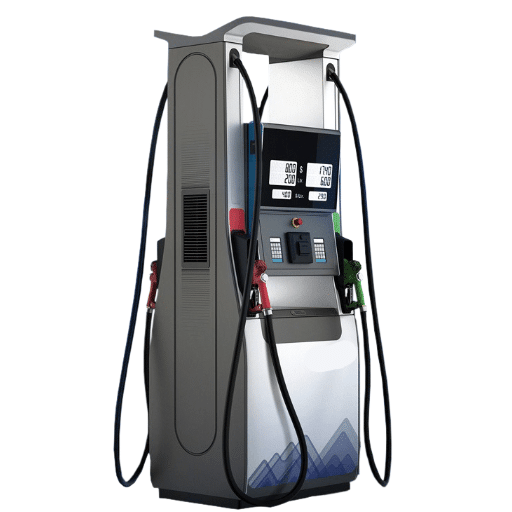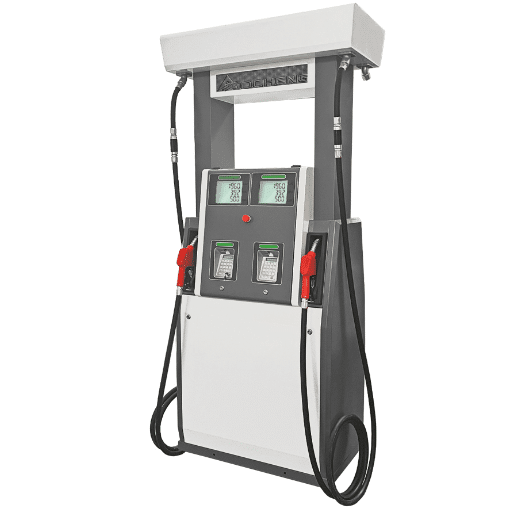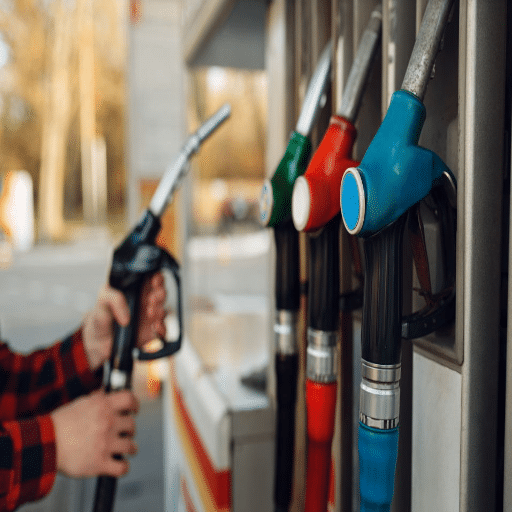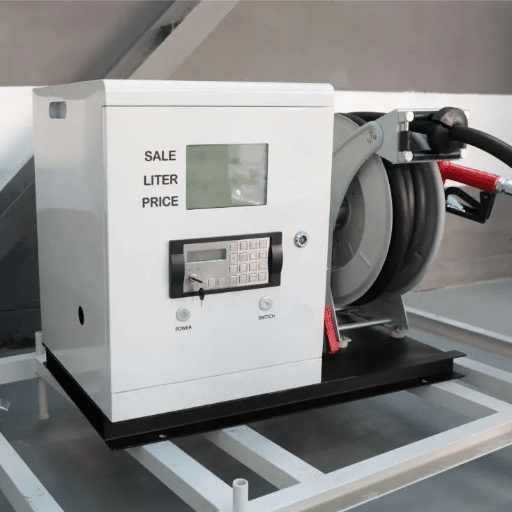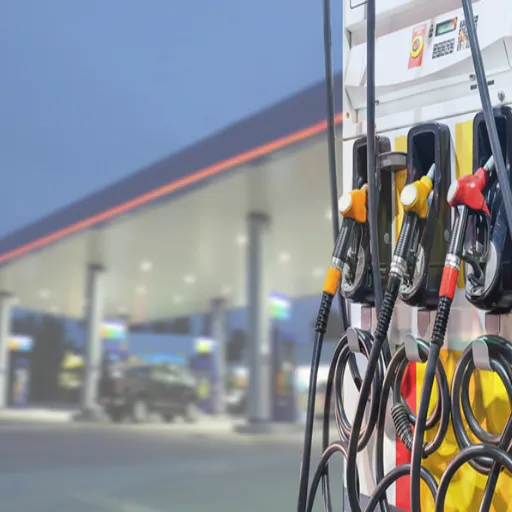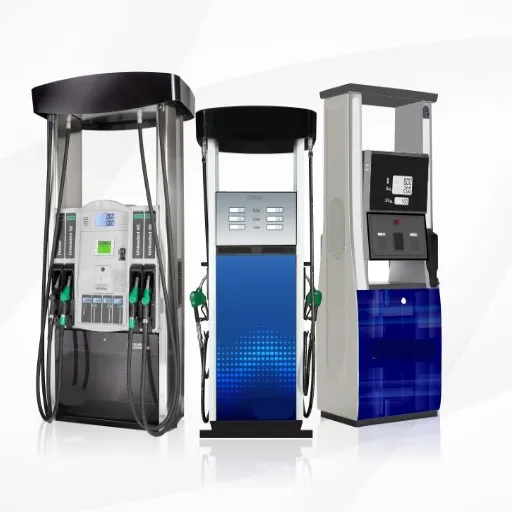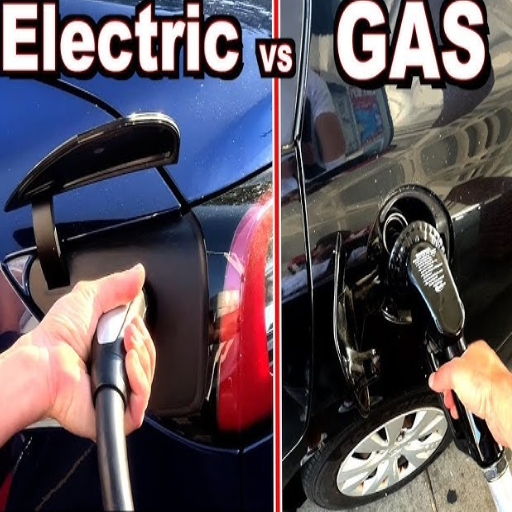One might view running a gas station as a sure way to earn some steady income in an automotive world; however, it is much more complex than that. Many assume gas stations have huge profit margins because there is a constant demand for fuel; however, in reality, the fuel profit margins are quite slim. Therefore, gas station owners have to rely on other sources of revenue to keep their establishments viable and competitive. This article delves into the financial workings of the gas station industry, looking into their alternate revenue streams, their profit margins, and the unexpected variables driving their successful existence. Whether merely curious about what keeps these establishments operational or an entrepreneur or an insider wishing to glean insight, here is an in-depth review to clarify just how profitable gas stations really are.
Overview of the Gas Station Industry
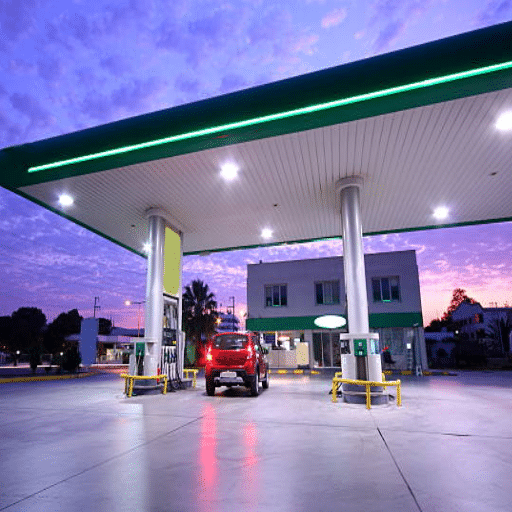
The gas station industry is a topic of paramount importance, and any points therein would be contiguous with transportation and regular mobility. Gas stations earn revenues chiefly through fuel sales, sales at convenience stores, and further services such as car wash. While most income is generated through fuel sales, profit margins on fuel sales are normally very tight due to changes in the price of oil and tight competition. Many stations, therefore, operate on slim margins on fuel and maximize their profits through sales in the convenience store, where profit margins are many times higher than on fuel. Success in the industry depends largely on location, customer traffic, and the added advantage of delivering value, which could include round-the-clock service or wide product offerings.
Current Market Trends
The fuel retail industry is experiencing disruptive forces due to advancing technologies, altering consumer behaviors, and global economic scenarios. One of the trendier angles is sustainability and other alternative energy means. EV adoption is picking up pace as EV sales are expected to witness a CAGR of over 20% till the next decade. This transformation has prompted the fuel stations to place EV charging points for an ever-expanding group of environmentally conscious consumers.
Another important aspect is payment through an app and loyalty programs entering the scene. Customers have progressively turned away from cash transactions, with mobile applications providing ways to earn loyalty points, get exclusive discounts, and enjoy personalized offers. Retracing their steps to the integration of such technologies grants retailers a higher level of customer engagement and retention.
Convenience marks the final trend affecting the industry. Mobile consumers are searching for a fuel station and one-stop shop for fresh food, coffee, and maybe even curb-side pickup from one location. Bases for extended services are thriving in markets, with convenience stores projected to expand beyond $40 billion globally in just a couple of years.
With fluctuations in oil prices and an emphasis on energy security, the pricing strategies and inventory management of fuel retailers are also under pressure. Through diversified services and intelligent use of technological advances, the best are in the front of the pack, moving towards a fine blend of innovation and consumer needs. It is these changes that keep the players in the crude oil sector relevant amidst a raging change.
Key Players and Competitors
Globally, a mixture of international titans and regional players together drive innovative concepts and healthy competition in the fuel retailing trade. Shell, ExxonMobil, and BP continue to dominate the international market by leveraging their massive networks and initiatives into renewable energies. Shell estimated its 2022 revenues at over $386 billion and has been lavishing incredible attention on EV charging infrastructure, projecting to own more than 500,000 charging points by 2025.
Similarly, ExxonMobil, with revenues over $400 billion in 2022, remains a dominant player focusing on advanced fuel technologies and penetrating emerging markets. Alternatively, BP is focusing on sustainability through its “Reimagining Energy” strategy to slash carbon emissions significantly and to double renewable energy capacity by 2030.
Regional competitors are also key accelerators for change. Indian firms like Reliance Industries and Chinese ones like PetroChina are quickly building up their fuel retail and alternative energy portfolios. Reliance manages thousands of fuel retail outlets with BP, while PetroChina dominates the Asian market in a balancing act between traditional fuels and investments in hydrogen and solar energy.
The entrance of non-traditional companies such as Tesla and specialized EV charging companies such as ChargePoint is re-shaping the competition: an all-electric mobility focus. Such diversification is giving the established players the impetus to innovate and branch out to align with changing consumer tastes and regulatory objectives to lower carbon footprints.
This understanding is vital as the fuel retail sector pivots into future-marketed sustainability and technological advancements.
Factors Influencing Profitability
Fuel retail businesses’ profitability depends on several key factors, many of which are being shaped in the context of global sustainability goals and technological innovations:
Changing Consumer Demand
The rise of electric vehicles (EVs) means that traditional fuel stations are experiencing dwindling demand for pure petroleum products such as gasoline and diesel. The recent estimate of the number of electric cars sold globally states that the number exceeded 10 million in 2022, much more than in previous years, indicating a steady shift in consumer preference.
Transition to Renewable Energy Options
Various entities are heavily investing in renewable energy solutions, including solar charging stations and alternative fuels such as biofuels and hydrogen. Governments across the globe encourage renewable adoption through subsidies and tax benefits, thus driving diversification of revenues in front-running businesses that operate within the field.
Technology Changes
Automation increases the implementation of operational efficiencies, and so does digitalization. AI and predictive analytics are being utilized to optimize supply chain management, forecast demand, and reduce operating expenses. Besides these, payment systems and loyalty programs that boast the brand “app-based” are currently cementing customer experiences, thereby increasing brand loyalty and sales opportunities.
Compliance and Tax Regulations
Stricter new regulations were put in place to foster fewer emissions and thus laid weight on the adoption of cleaner energy alternatives. For instance, in many countries in Europe, there have been fairly tight deadlines given to ban the sale of new internal combustion engine vehicles by 2035. Being non-compliant could be very costly with respect to the imposition of heavy fines, and that directly affects profitability.
Commodity Prices Are Unstable
Due to the global geopolitics between a few nations, production control among some powers, and disruptions in supply chains, crude oil prices have remained highly volatile. This highlights the need for diversification into EV charging infrastructure since even short-term fluctuations in oil pricing can affect the operating discounts on big margins for the traditional fuel retailer so much.
Infrastructure Investments
Expanding an EV charging infrastructure remains very crucial, as the demand for charging stations will increase exponentially with increasing EV adoption. Analysts forecast that the global EV charging station market may cross $104 billion by 2030, which presents untapped opportunities for traditional fuel retailers.
To comment on all of the above factors requires an art of balancing between investments in innovation and the profitability of existing assets. Only those companies that follow these trends will prosper in the ever-evolving dynamics of fuel and mobility.
Gas Station Revenue Streams
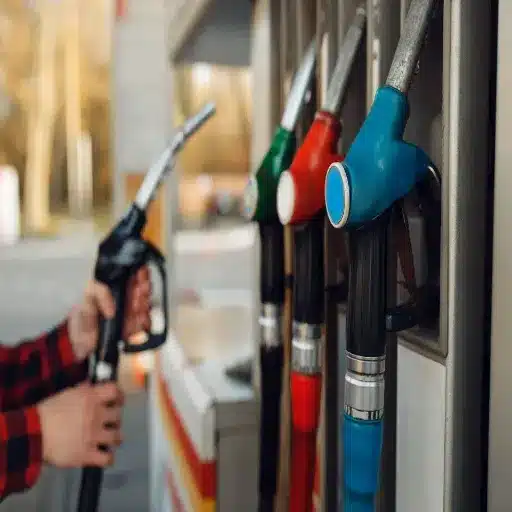
Primary Revenue Sources:
- Fuel Sales: Traditional fuel sales are considered the chief source of revenue; however, with the increasing trend towards electric vehicles, this demand may decrease.
- Convenience Stores: The gas stations may rake in quite a lot from their convenience stores, which sell snacks, beverages, and other common essentials.
- Food and Beverage Services: Fast-food outlets or a self-operated coffee shop at gas stations bring traffic during that interim period.
- Car Wash Services: Car wash facilities can add another income stream, and they can often be high-margin ones.
- EV Charging Stations: The installation of charging stations has become a growing opportunity to attract new customers and generate another income stream with the rise of electric vehicles.
- Promotions and Advertisements: Promotion and advertisement income can be generated from partnerships with brands or by placing billboards and advertisements on-site.
Fuel Sales
Gasoline remains the primary revenue-generating business of the gas stations. Its profitability depends on the consumption trends, pricing strategies, and retaining customers. The industry reports further indicate growing worldwide demand for fuel, particularly from those regions where economic expansion results in an increased need for transportation. For example, the global gasoline market is expected to reach a size of above $1 trillion by 2028, reflecting a CAGR of 3.1% from 2022.
Besides traditional gasoline, other alternatives like diesel and biodiesel-ethanol blends are coming into greater use for a larger variety of vehicles. More importantly, a loyalty program based on fuel purchases retains the customer, ensuring fuel sales and customer engagement. Keeping track of changes in market demand and offering competitive prices are the ways to go forward for sustainable growth in the fuel sales sector.
Non-Fuel Sales: Convenience Store Revenue
Retail sales from the convenience store provide the highest generator of non-fuel revenues for a gas station, with a varied assortment in stock ranging from snacks, drinks, to basic household items. Current data shows snacks and packaged beverages continue to rank first and second in terms of convenience store revenues, representing roughly 22% and 19% of in-store sales, respectively. Moreover, grab-and-go foods and coffee programs steadily grew enthused by on-the-go clients who prefer a quick stop for a meal.
The unconventional product placement with cross promotions, which helps to add to the revenue streams, sets the right income tone for a convenience store. For example, stores that employ cross-merchandising, selling snacks only in tandem with fuel discounts or as part of a promo with drink purchases, surely benefit from higher average ticket sizes. Technology has become an enabler with loyalty apps and self-checkout kiosks serving as the best co-ops in an effort to improve the customer experience and build up repeat business. Marrying speedy service and variety, many stores are adeptly leveraging the new consumer disposition toward speed and access.
Additional Services: Car Wash and More
The new car wash service is so convenient for sites to schedule as an adjunct of shops that there are some small car wash operators who schedule their wash operations around the shop opening hours. Cleaning options may range from an exterior-only wipe down to an intensive interior and exterior cleaning. There are more than 4,000 car wash systems in the U.S., with current reports estimating annual revenues in the states at $15 million, which provides well and guarantees widespread demand.
Tiered wash packages are offered by the stores, with options for basic washing, premium wax, or ceramic sealants that appeal to wider customer groups. They have integrated these into loyalty systems that encourage customers-to-fuel, shop, and wash car-washing visiting one spot. An increasing number of businesses are also installing water recycling facilities, helping reduce operational costs and tap into the current trend toward environmental sustainability, thus operating and being environmentally sound.
Understanding Profit Margins
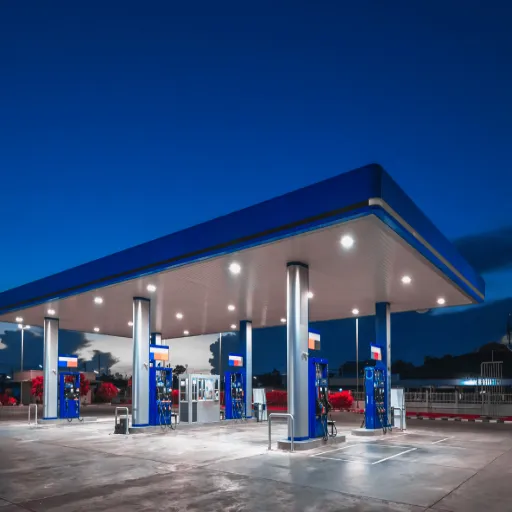
Profit margin is the percentage of income a company is able to maintain as profit after paying all expenses. It equals net profits divided by gross income multiplied by 100. High profit margins typically point toward efficient cost management, while lower profit margins might signal opportunities to improve cost control. Businesses should keep an eye on their profit margin with regard to their financial health to take advantage of growth or to reduce costs.
Average Gas Station Profit Margin
Key Insight: Profit margins for gas stations vary depending on the location, fuel prices, and operational costs. On average, the net profit margin for the gas stations usually lies between 1.4% and 3%.
Such a fairly narrow margin is accounted for by high costs of fuel procurement and operations, and competition. Sales of fuel indeed constitute one of the primary revenues of the gas station; however, it provides very little profitability to the gas stations as the prices of fuel at wholesale levels fluctuate and their profits are kept under pressure.
To maintain or improve their profitability, gas stations also depend on alternative revenue streams generated through convenience store operations, car washes, and food services. These services also generate much higher profit margins for local gas stations. For example, convenience stores generate 20% to 30% profit margins on their products. To stay viable and grow their business in this competitive marketplace, gas station owners keep a keen eye on operating costs and strive to improve their range of services.
Comparison of Fuel vs. Non-Fuel Profitability
| Revenue Source | Profit Margin Range | Key Characteristics |
|---|---|---|
| Fuel Sales | 2% – 6% per gallon | High volume, low margin, subject to price volatility |
| Convenience Store Items | 20% – 30% | Higher margins, steady demand, diverse product range |
| Car Wash Services | 50%+ | Premium pricing, lower overhead costs |
| Food Services | 25% – 40% | Fresh prepared items, strong customer appeal |
Fuel sales are often the backbone of gas station operations, yet they typically yield low profit margins that range between 2% and 6% per gallon. Very thin profit margins are derived from fierce competition, ever-changing oil prices, and tax regulations eating up earnings. An enormous number of fuel sales highlight the basic product that alone is not very profitable and does, therefore, require supplemental income.
Non-fuel products offer higher margins of income. For example, convenience store goods such as snacks, soft drinks, and other convenience items bring in very high profit margins, from anywhere between 20% and 30%. Special services like carwash treatments offer even higher margin capabilities, sometimes over 50%, as their overhead costs tend to be much lower when compared to fuel operation expenses. Increasingly, gas station models incorporate hot food service or branded coffee applications to generate strong profits from busy customers seeking quick meal solutions.
Moving more into non-fuel product diversification has become increasingly popular, especially in cities and suburbs where consumer demand has fueled the movement toward a one-stop-shop convenience. Gas station owners who expand strategically into non-fuel services not only increase their gross margins but also create a much more resilient business. The electrification of transport is also another catalyst proving the viability of a non-fuel revenue stream, as the demand for conventional gasoline will be on the decline for the next several decades.
How Much Do Gas Stations Make?
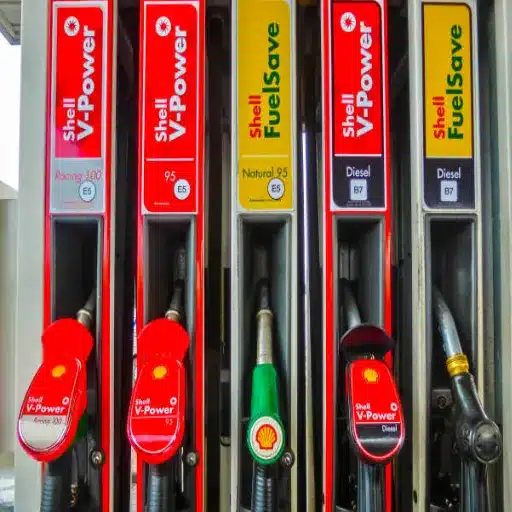
The revenues generated by gas stations can widely differ with the factors considered, such as location, fuel prices, or other sources of revenue. Usually, they might incur a net profit margin of around 1.4% to 3% over the fuel sales, as the major part of fuel revenues is applied to pay for wholesale prices and other expenses. However, gas stations profit more by selling convenience store items, car washes, and food services, as these items usually sell for more. Logically, the total amount earned in profit by a gas station is dependent on the size of the establishment, the number of customers, and revenue streams.
Typical Revenue Figures
Depending on their location, size, and offerings, gas stations easily see the annual income generated. Generally speaking, a small to medium gas station in any part of the US will have revenues anywhere between $2 million and $4 million, mostly from fuel sales. Yet profitable are gullible, though, because the fuel prices are set at extremely low margins. Bigger gas stations or larger gas stations located in busy areas will make revenues of at least $5 million every year, especially if they have more lucrative secondary revenue streams, such as in-store sales, specialty coffee outlets, or car washes.
Convenience store sales mark a crucial part of total revenue; items such as snacks, drinks, and tobacco often bear markups of 30% or more. Car wash adds another profitable aspect, with some sites averaging $150,000 in sales yearly from that service alone. The gas station booths improve their financial robustness and increase their annual bottom-line potential by dispensing into offered avenues and juxtaposing them with high-margin goods.
Factors Affecting Income
Several crucial factors influence the income potential of a gas station business-from location and fuel pricing to income from other sources and operational efficiency.
Location and Traffic Patterns
It is the location of the gas station that predominantly determines its profitability. Gas stations located on busy roads or near urban centers are commonly in demand, and businesses buy big volumes of fuel and convenience store supplies. Closeness to highways or other busy roads gives stations an additional edge since they provide convenient pit stops to travelers.
Fuel Pricing and Margins
Fuel is the principal revenue generator, yet the mark-ups may sometimes be very little, varying between three and five cents per gallon after operating costs such as credit card fees, etc., have been accounted for. Strategic pricing and discounting for loyalty members should help create a perception of value that will bring in more customers and hence overall sales.
Diversification of Services
Incorporating other services, such as car washes, repairs, and air-filling stations, can substantially increase income. An automatic car wash, for instance, can gross about $6500 monthly, depending on how many people it caters to and how it is priced. Some stations even leverage agreements with fast-food restaurants or coffee shops to enjoy a steady income in the form of lease payments.
Seasonality and Weather Conditions
Seasonal patterns and adverse weather also impact revenues. During summer, for example, an increase in gas sales is experienced during travels, or sometimes, on the contrary, decreases when harsh winter storms prevail. Those gas stations found in parts prone to extreme weather often experience fluctuations in terms of fuel demand and convenience store sales; thus, it becomes important to strategize in terms of planning and stocking items throughout peak seasons.
Technological Integration
Investment into technologies like pay-at-the-pump systems, loyalty programs, and mobile apps elevates the customer experience and encourages repeat visits. With mobile payment options, alongside discount offers or reward programs, stations are currently more likely to attract tech-savvy customers and increase sales.
By focusing on these factors and continuously evolving with customers’ needs and respective markets, gas stations can pave a great pathway towards increasing revenues, predominantly taking into account the long-term profitability.
Gas Station Owner Income Analysis
Owner Income Range: Gas station owners within the U.S. have the potential to earn anywhere from $40,000 to $100,000 annually, with higher profits generally coming from high-traffic locations with top services.
The gas station owner’s income depends on different factors, such as location, volume of fuel sales, any other services offered, and the efficiency with which it is run. Such higher profits are generally the publicity-based units with heavy traffic or top services for car washes, convenience stores, or quick-service restaurants.
Fuel sales make for slim profit margins, say 3 to 7 cents per gallon, and many owners therefore make a living from their other outlets. A convenience store can be a big contributor to income. Drinks, snacks, lottery tickets, and essential household items are some of the highest-margin line items – commonly 30% or more. Location is another never-to-overlook factor determining the overall income.
Stations near highways or towns, or major routes, enjoy more foot traffic and fuel demand, which readily translates into innumerable sales opportunities. Stations upgraded to offer alternative fuels, EV charging stations, or loyalty programs can meet current consumer needs and thus favor profitability.
Once costs of operation are considered, such as wages or maintenance, utility costs, and franchise fees, there comes the net income. Controlling the above-mentioned costs wisely and implementing environmentally friendly measures such as LED lights or solar panels can save owners money and augment their earnings. Other influencing factors include weather, recession, and changes in fuel prices.
While profitability can be achieved, however, being able to sustain income as consumer preferences evolve, along with the energy landscape, demands careful planning, market analysis, and adaptability.
Strategies to Increase Profit Margins
Enhancing Food and Beverage Offerings
Entering high-margin categories, such as fresh food, snacks, and gourmet coffee, can significantly increase profitability. According to one report, foodservice sales at convenience stores, especially for freshly prepared items, have grown consistently yearly and can constitute 22% of in-store revenues. Healthier choices address a shift in consumer preferences and also help boost spending per visit.
Installing EV Charging Stations
Emerging as one of the emergent trends, installing EV chargers is an ideal forward-looking investment. Global EV charging station market revenues are projected to reach $207.5 billion by 2030, implying enormous long-term revenue potential. The businesses that capitalize on this trend by providing amenities for customers to wait, like a coffee shop or retail options, will increase foot traffic and sales for the couple of hours that will be used for charging.
Promotion of Loyalty Programs
Professionally designed and maintained customer loyalty programs encourage visits that help retain customers in the interest of the company. According to recent surveys, customers being rewarded with loyalty incentives tend to boost their own in-store yearly purchases by more than 20%. Collaborative personalized promotions using digital platforms increase engagement and give better returns.
Private Labels Expansion
Those stores that have the capacity to widen their range of private-label products, particularly in such fast-moving categories as snacks, beverages, and household items, will hold onto more revenue. Such products usually carry higher profit margins than those of national brands and contribute to building a brand identity for their store.
Inventory Optimization
With the application of technology-based inventory tracking solutions in real-time, the waste level could be brought down while at the same time ensuring that shelves are kept stocked with what is in high demand. Recent data-driven stocking strategies suggest that allocating maximum space for fast-selling and high-margin items may go a long way to provide sales effectiveness by 15%, coupled with the reduced capital that would be locked in slow movers.
Online Presence Boost through Delivery Partners
Partnerships with third-party delivery service providers help stores draw in additional customers over and above walk-in shoppers. With convenience and quick delivery options becoming popular, businesses engaged in this business model are reportedly witnessing a surge in revenues. The appearance of convenience stores on delivery platforms increases their digital uptake too, thereby aiding in capturing demand.
Mining Data for Analytical Insights
Using modern analytical tools, it is possible to find out already existing purchase behavior, peak hour timing, and area demand. Based on such analytical findings for their relevant region and shop category, entrepreneurs can best tailor their merchandise offering and optimize operational margins. For example, predictive analytics has increased promotional planning revenues by as much as 12% monthly.
By adopting these strategies and keeping a close ear to shifting consumer behavior, gas station owners can build resilient businesses with diversified revenue streams and maintain strong profitability amidst an ever-evolving industry landscape.
Boosting Gas Station Profitability
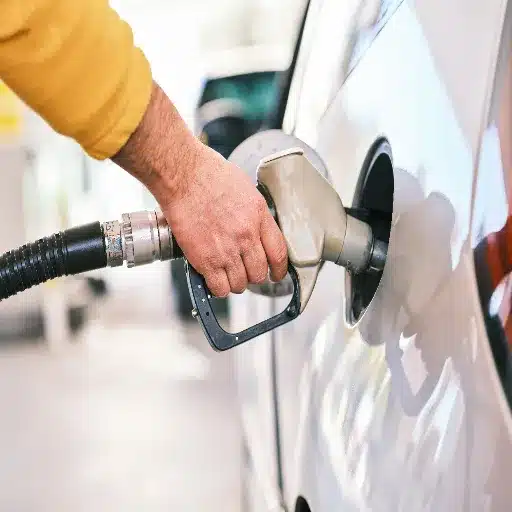
- Optimize Pricing: It is necessary to observe fuel prices going on in your area in order to remain competitive and to maintain a healthy profit margin. With a strategic pricing system, you will be able to attract more customers without compromising your earnings.
- Diversify Revenue Streams: Consider extending your services into operating car washes, convenience stores, or food and beverage outlets. These extra income sources could add significantly to your gross income.
- Enhance the Customer Experience: Good customer service coupled with clean, well-lit premises encourages recurring visits and builds customer loyalty.
- Improve Operational Efficiency: Keep the operational costs down by adopting energy conservation methods like LED lighting or solar panels and by maintaining your equipment often enough to prevent downtime.
- Marketing and Loyalty Programs: Apply targeted promotions, partnerships, or loyalty schemes to reward existing customers and lure in new ones.
- Keeping Up with Market Trends: Think about future market trends: setting up electric vehicle charging stations can promote your gas station as a forward-looking and environmentally friendly destination.
Implementing a Loyalty Program
The well-designed loyalty program greatly enhances retention and repeat business. For effective implementation, a marketer must identify his or her target audience first: what they really want. Work on customer data to identify the most beneficial rewards: Fueling discounts, free car washes, or points for in-store purchases. The simpler, the better- use mobile applications or digital cards so that patrons easily track their purchases and redeem their points.
Diversifying Products and Services
To further diversify my products and services at the gas station, I would start by offering related services such as a convenience store with snacks, beverages, and general items. Additionally, I could entertain car wash services, air pumps, or partnership opportunities with local firms to sell unique products meeting customers’ needs. Market trends and customer preference assessments would be regularly carried out to determine new avenues of expansion and innovation, making the gas station not only competitive but also attractive to a wider audience.
Innovative Marketing Strategies
A gas station project should have novel marketing strategies if it is to attract and keep customers. In fact, a loyalty reward program will greatly benefit the retention of customers by giving them discounts or free services after a certain number of purchases. Digital marketing, including targeted ads on social media and keeping active online, will target different demographics and always keep customers engaged through existing promotions or the latest updates. Collaborations with local businesses for some kind of cross-promotions may also add to the visibility of your gas station in the community, attracting new customers. The use of modern technological facilities, such as machinery that lets you pay for fuel via a mobile app or gives you real-time updates of service availability, will simply add convenience, hence appealing to the younger crowd. Customer feedback, if given top priority, plus the ever-changing scenarios, will always keep ahead of current trends so that improvement will be continuous for long-term success.
Reference Sources
“The Effect of Facilities and Service Quality on Customer Satisfaction of Gas Stations”
“Consumer Protection Related to Dispensing Pump Manipulation in SPBU (Gas Station)”
Frequently Asked Questions (FAQs)
What about gas station profitability?
Gas stations can have widely differing profitabilities depending on location, services offered, and management. Fuel sales generally have thin profit margins for many gas stations; however, these stations can increase profits with other services such as a convenience store, car wash, and loyalty programs. The diversified income streams allow for steady revenue and less dependence on fuel sales.
How much revenue does a gas station make?
The total revenue of a gas station can see huge fluctuations depending on aspects like station traffic and the ability to maintain a loyal customer base. On average, apart from fuel sales, there are store sales at gas stations, or sales of services that tend to come with a much thicker margin than what is earned from gasoline. These include snacks and beverage sales.
What affects the profit margin of a gas station?
The profit margin of a gas station is primarily affected by the fuel costs, competition, and operational efficiency. If these costs are managed well, it is possible to have substantially greater profit margins than are achieved through fuel sales alone. Franchise operators may profit from name recognition and relationships with suppliers, further improving profitability.
What is the average net profit for gas stations?
The average net profit for gas stations varies, but many describe their profit margins on gasoline sales as 2 – 3%. Considering other income sources such as convenience store sales and services, these net profit margins are multiplied several times, contributing to much higher returns on investment.
How to increase gas station profitability?
To enhance profitability at any gas station, diversification can be considered. Additional services like car washes, loyalty programs, or food sales contribute significantly towards overall revenue. Monitoring the fuel margin and adjusting fuel prices accordingly to changes in wholesale fuel costs will further enhance financial returns.
What are the main sources of profit for a gas station?
Fuel sales provide the primary source of profit for many gas stations; however, a great many others earn considerable sums from convenience store sales and services. By marketing high-margin items and providing an enhanced customer experience, a gas station can generate consistent revenue streams, thereby improving overall profitability.
How much does it cost to launch a gas station?
This can vary widely depending on the location, size, and whether it’s a franchise or independent operation. Among other things, permits, construction, and initial inventory purchase must be accounted for. These options, along with others, define the cost of investment that could range from several hundred thousand to millions of dollars.
How can loyalty programs increase gas station revenue?
Loyalty programs can generate substantially increased revenue for a gas station by promoting repeat business and enhancing customer retention. Through discounting fuel purchases or the use of accumulated points for purchases, loyalty programs increase the loyalty of customers, generating consistent revenue streams and hence, bettering the profitability of the gas station.
What is the role of location in gas station profitability?
Location plays an important role in gas station profitability. Gas stations in high-traffic areas will attract more customers, thereby increasing sales volume. A fine location might allow such stations to command premium pricing, which will inevitably increase revenues and contribute further to profit margins.

